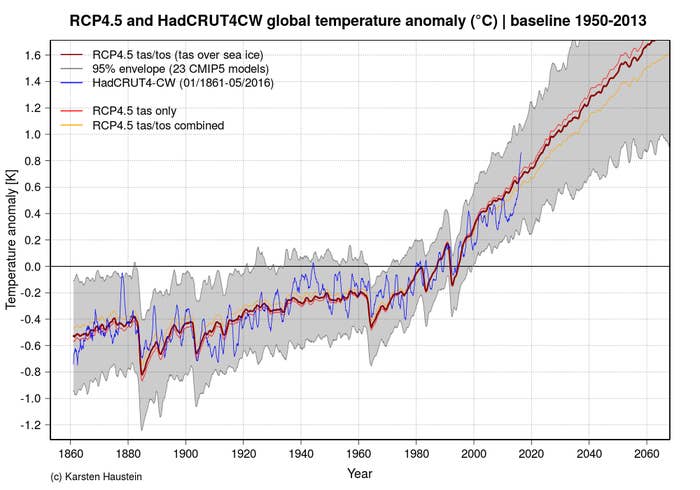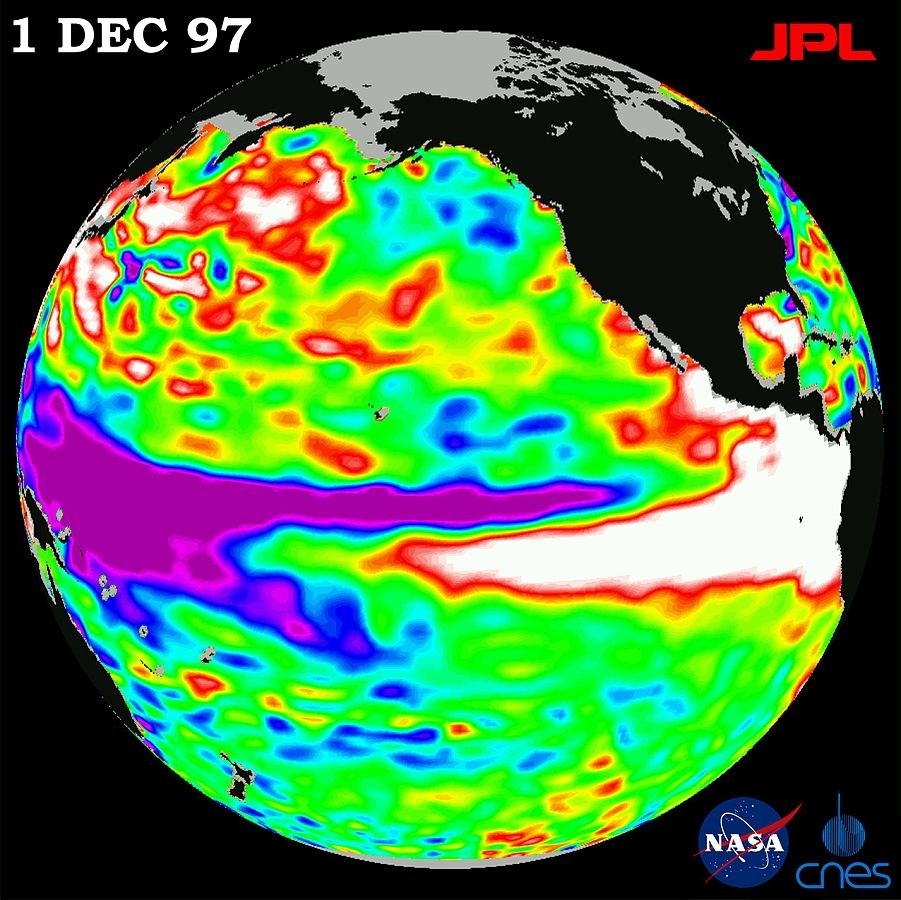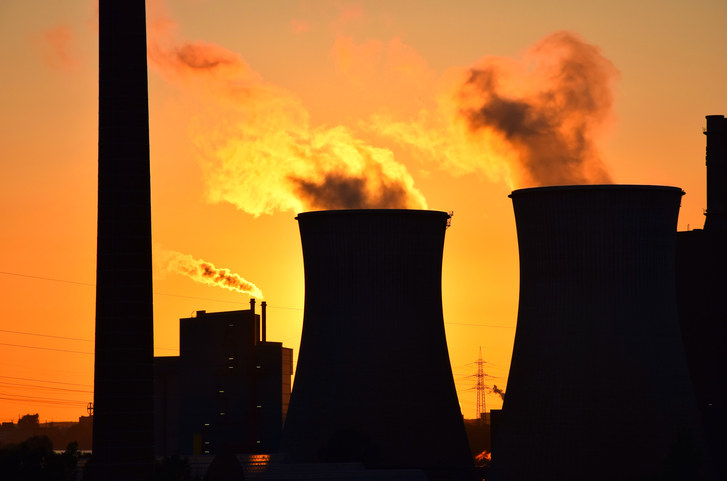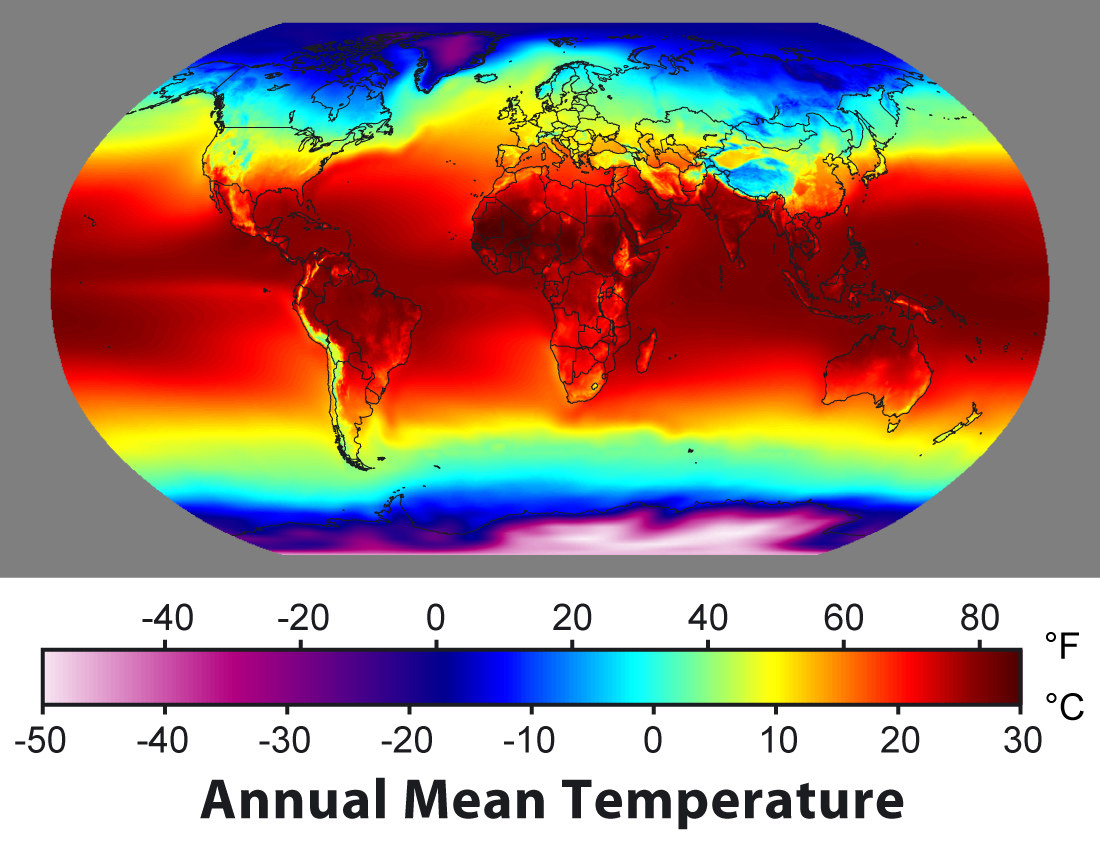
Last year was the hottest year on record, the third consecutive year that the record has been broken, according to new data just released by NASA, the US National Oceanographic and Atmospheric Association (NOAA), the UK Met Office and the University of East Anglia.
The NASA/NOAA data put 2016 as the hottest year outright, while the Met Office and UEA say that it was most likely hotter than 2015, but the difference was within the margin for error.
The warm period has been driven by human-caused climate change, as well the ocean phenomenon El Niño. It's the first time that three record-breaking years have followed each other like that, but it's not a surprise – scientists told BuzzFeed News that they expected 2016 to be the hottest back in October, when this piece was first written.
El Niño ended in early 2016, so 2017 will likely be cooler. However, climate scientists firmly expect the trend towards warmer temperatures to continue.
Fifteen "hottest months" in a row.
If you’ve read the news over the last year or so, you’ll have seen lots of headlines along the lines of “August ties with July as hottest month on record”, or “Hottest ever June marks 14th month of record-breaking temperatures”, or “January to June was Earth's hottest half-year on record”, or “March Was The Most Abnormally Hot Month Ever Recorded On Earth”. Between, roughly, early summer 2015 and late summer 2016 – the precise dates depend on whose data you use – every month has been the hottest of its kind on record: the hottest January on record, the hottest February, the hottest March, and so on.
The NOAA described it in July as “the longest such streak in the 137-year record”; The Guardian called it “remarkable”. NASA has warned that the world is warming “at a pace not experienced in the last 1,000 years”, and the former NASA climate scientist James Hansen has said that the Earth hasn't been this hot for more than 100,000 years.
So BuzzFeed News spoke to three climate scientists to figure out the science behind the headlines. Is this long succession of hottest months something unexpected? Or is it an illustration of what we already knew?
The temperatures have been shocking, but they're not surprising.

While the scientists agree that it is remarkable – a “perfect storm of warming” – they say that the run of high temperatures is in no way unexpected. “I'm surprised that people have expressed such surprise,” Tim Osborn, a professor of climate science at the University of East Anglia (UEA), tells BuzzFeed News. “We're in quite a distinct and notable period of warmth, but I don't think it's necessarily more than you'd expect.
“It's not outside the range of model predictions. In fact, it's still not even at the top of the range of model projections.”
“We’ve had a streak of record-breaking global temperatures, way above the levels we’ve seen so far,” Karsten Haustein, a researcher at Oxford University’s Environmental Change Institute, agreed. “But it didn’t come as a surprise to anyone who is familiar with the natural variability.”
This is why they’re not surprised, and why that might be scarier than if they were. The end of 2015 and the start of 2016 saw a very powerful “El Niño” – a phenomenon in which warm water rises to the surface of the Pacific Ocean, warming the global atmosphere significantly.
El Niño years are always hot, and the world is warming up anyway.

El Niños come around every decade or so; El Niño years are always warmer than the years around them. But what made this last year so dramatically warm, even by the standard of other strong El Niño years, was, of course, the underlying warming caused by humans pumping greenhouse gases into the atmosphere.
“The way to think of El Niño and global warming is that the warming is the tide coming in, and El Niño is the waves,” says Dave Reay, a professor of carbon management at the University of Edinburgh. The baseline temperature, the tide, keeps getting higher and higher; a big wave at higher tide will naturally reach further up the beach. “It was a perfect storm of warming,” says Reay. “Warming induced by greenhouse gases.”
Exactly how many records have been broken depends on who you ask. NASA’s data suggests that May and June of 2016 were slightly warmer than May and June last year, but UEA’s records say they were tied. “Given the uncertainties, you have to be a bit cautious about saying 15 record-breakers in a row,” says Osborn. “But it's there or thereabouts.”
Before this run began, though, we had been living through a long period of apparently slower warming, which rendered the sudden uptick even more dramatic. The “warming pause” or “warming slowdown” was largely a product of El Niño’s flipside, La Niña, which pushes cold water to the surface of the Pacific and reduces the atmospheric temperature worldwide.
“In 2011, we saw the strongest La Niña for many, many decades,” says Haustein. “That had to push temperatures down. There was no way temperatures could be anywhere above average.
“At some point it had to flip, as it did in quite a convincing way last year. So the result has been all the warming that we should have seen in previous years, but couldn’t because of the cold Pacific Ocean.”
2015 was the hottest year on record – and 2016 will break the record again, even if you strip out the effects of El Niño.

It’s not just that the individual months have been the hottest. The entirety of 2015 was the hottest year on record – and, says Haustein, 2016 will break that record “by a considerable margin”. What is somewhat more surprising, he says, is that 2016 will be the hottest year on record even if you strip out the effects of El Niño.
“It’s really straightforward to do,” he says. “And you can see that 2009 to 2013 were all below the trend line, then 2015 was just above, and 2016 provisionally is at the upper limits.” That’s partly, he says, because El Niño has knock-on effects – such as trapping cold air at the Arctic – which are harder to strip out of the data, but it’s mainly just because the world is getting steadily warmer.
The run of records has almost certainly come to an end, as the effects of El Niño – which reached its peak last winter – fade away. “There’s typically about a six-month lag between the peak of the event and the peak effect on the global temperature,” says Osborn. “We're a bit more than six months later, so the global effect on the temperature is starting to diminish.” We’re now in between El Niño and La Niña, and a weak La Niña is forecast for next year, “so it will be a bit on the colder side the next year”, says Haustein – but probably still warmer than the years immediately before 2015.
Climate models pretty much saw this coming.

Not only has the run of new records not taken anyone by surprise, it’s been a vindication of the science of climate modelling. It has broadly met their predictions for a strong El Niño year, suggesting that there aren’t any major factors being left out.
Climate models take into account various “feedback” systems – ways in which warming either triggers further warming (positive feedback) or limits it (negative feedback). As ice melts, revealing the dark sea or land underneath, the Earth absorbs more light rather than reflecting it back into space, and so warms up faster – that’s a positive feedback. But warmer air can lead to more evaporation, and therefore more clouds, which reflect light and slow down warming – that’s a negative feedback. These systems hugely complicate the modelling of the climate.
But although the warming of the last two years or so has been dramatic, the climate models have kept pace, says Osborn, suggesting that no major feedback processes “are either underestimated or omitted in the models”.
That’s despite startling footage this year of methane gas bubbling from Siberian permafrost. Billions of tonnes of methane, a powerful greenhouse gas, are locked into the frozen tundra. As the planet warms, there are fears that it will be released in enormous quantities, pushing global temperatures higher and triggering more positive feedbacks. “I’m not saying that it isn't a concern,” says Osborn, “but there isn’t any evidence in the last few years of some dramatic positive feedback process beginning.”
We're not at any higher risk of catastrophe than we were two years ago – but we're not at any lower risk, either.

What all this means is that, despite the record-breaking temperature, we are no more at risk of catastrophic climate change than we already were, say the scientists – and, of course, no less. “I am concerned about global warming,” says Osborn, “but my concern hasn't been altered by the last couple of years of warming.”
Haustein says that a “runaway” greenhouse effect, the sort that heated our planetary neighbour Venus to a hellish 450°C, is vanishingly unlikely. “Runaway effects, where the oceans evaporate and things, aren’t really on the books.” The amount of carbon dioxide in the atmosphere has just passed 400 parts per million (ppm) – alarmingly high, compared with the pre-industrial level of about 280ppm. But, he says, for the sort of catastrophe that destroys all life on Earth, it would need to reach about 4,000ppm, which would need us to burn all the fossil fuels in the world and quite a lot more. “The worst that’s feasible is perhaps 1,000ppm, and that’s pretty worst-case.” Instead, he says, the impacts are likely to be devastating regional effects, such as desertification and species loss, rather than global.
That’s not to say that the risk isn’t very real. “We can expect warming by the end of the century, compared to the pre-industrial average, of between about 1.5°C and 5°C,” says Reay. “That’s from a level where we can adapt to a lot of it, to a scenario where adaptation is nigh on impossible in many areas. Impacts of a 5°C warming would be very negative and would affect food production in great swaths of the world.” Osborn says there is a risk of “very severe outcomes”, and that the risks are greater the more and the faster we allow warming to happen.
Meeting the Paris goal of less than 1.5°C warming will need "a miracle".

The recent Paris accords committed nations to a goal of no more than 1.5°C warming above pre-industrial averages. Again, the recent warming has not affected the plausibility of that goal – “nothing has changed”, says Haustein – but it is at best an extremely optimistic target. “Already we’ve seen warming of around 1°C,” says Haustein. “The trajectory we’re on puts us at 1.5°C in 20 years. Two decades is really not a long time.” Meeting that goal is unrealistic “unless you believe in miracles”, he says.
He thinks 2°C is much more feasible, because it gives us another 20 years to reach net zero carbon emissions, and while it’s unlikely on current trajectory, if there’s a revolution in renewable technologies things could change. “We have seen these huge changes in how we use electronics and things that no one predicted 10, 20 years ago,” he says. “We had this massive development of electronics, and the same can happen with renewables. Sometimes these changes happen much quicker than people expect.
“I personally do see a chance to stay below 2°C. I don’t think political negotiation will do it, I think it's got to be a market thing.”
The 2015–2016 record temperatures, shocking as they have been, says Haustein, are what we expected, and haven’t affected the targets. “It’s important to keep that in mind. But the bad news is that things are as sensitive as we thought.
“I don’t know if there is any good news. But at least it’s not worse.”
